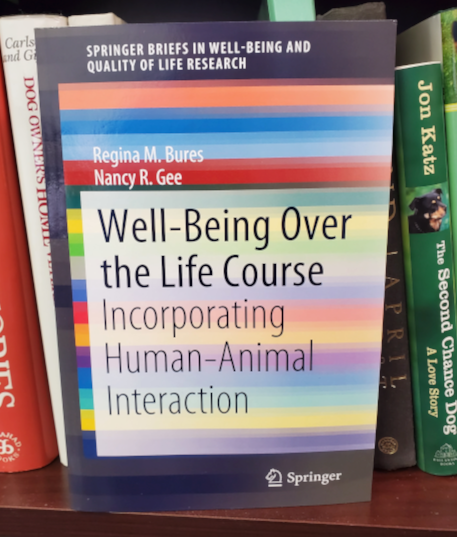The Role of Companion Animals in the Treatment of Mental Disorders
This book includes a forward by Patricia B. McConnell, Ph.D., author of The Other End of the Leash: Why We Do What We Do Around Dogs.
In recent years, the use of companion animals in treatments for mental disorders has been increasingly accepted by clinicians and the public. Written by top researchers, this book provides a much-needed overview of the current state of knowledge of animal-assisted interventions. The chapters integrate theoretical perspectives with the latest research and offer practical guidelines for the incorporation of animals into evidenced-based treatments. The book is an invaluable resource for both researchers and mental health practitioners.
Hal Herzog, Ph.D.
Professor Emeritus, Western Carolina University
Author of Some We Love, Some We Hate, Some We Eat: Why It's So Hard to Think Straight About Animals
N. R. Gee, L. Townsend, & R. Findling (Eds). (2023). The role of companion animals in the treatment of mental disorders. American Psychiatric Association Publishing. https://doi.org/10.1176/appi.books.9781615379910


Well-Being Over the Life Course: Incorporating Human-Animal Interaction
This book provides a multidisciplinary overview of the impact of human–animal interaction on well-being from childhood to later life. It presents a life course perspective to the study of human–animal interaction, addressing concepts of family and the role of pets therein, as well as the impact of companion animals on child development and successful aging. This book fills a gap in the existing literature by framing the study of human–animal interaction, including the role of animal-assisted interventions on well-being, in a broader social and behavioral context.
Bures, R.M., & Gee, N.R. (2020). Well-being over the life course: Incorporating Human-Animal Interaction. Springer. https://doi.org/10.1007/978-3-030-64085-9


Animal-Assisted Interventions in Health Care Settings: A Best Practices Manual for Establishing New Programs
Animal-Assisted Interventions in Health Care Settings: A Best Practices Manual for Establishing New Programs succinctly outlines how best to develop, implement, run, and evaluate AAI programs. Drawing on extensive professional experiences and research from more than fifteen years of leading the Center for Human-Animal Interaction in the Virginia Commonwealth University School of Medicine, the authors discuss both best practices and best reasons for establishing AAI programs. For thorough consideration, the text explores benefits from a variety of perspectives, including how AAI can improve patient experience, provide additional career development for staff, and contribute favorably to organizational culture and to the reputation of the facility in the surrounding community.
Barker, S.B., Vokes, R.A., & Barker, R.T. (2019). Animal-Assisted Interventions in health care settings: A best practices manual for establishing new programs. Purdue University Press. https://doi.org/10.2307/j.ctv15wxq8m


How Animals Help Students Learn: Research and Practice for Educators and Mental-Health Professionals
This volume is a definitive piece of work in the HAI landscape. Of interest to anyone seeking to further uncover why animals have an impact in educational settings, it’s a must read for anyone interested in the field of HAI research. Readers may retain more content if read with a therapy animal by their side.
C. Annie Peters, B.S.
President and CEO, Pet Partners
N. R. Gee, A. H. Fine, & P. McCardle (Eds). (2017). How animals help students learn: research and practice for educators and mental-health professionals. Routledge. https://doi.org/10.4324/9781315620619


The Social Neuroscience of Human-Animal Interaction
In this wide-ranging and fascinating volume, an international and cross-disciplinary group of authors seek to understand human–animal interaction (HAI) by applying research in the neurobiology and genetics that underlie human social functioning. Chapters examine HAI from evolutionary and developmental perspectives, and weigh the implications of HAI research for animal welfare. Clinical applications include animal-assisted therapies for people with disabilities, acute or chronic health conditions, and social or emotional difficulties.
L. S. Freund, S. McCune, L. Esposito, N. R. Gee, & P. McCardle (Eds). (2016). The social neuroscience of Human–Animal Interaction. American Psychological Association. https://doi.org/10.1037/14856-000

